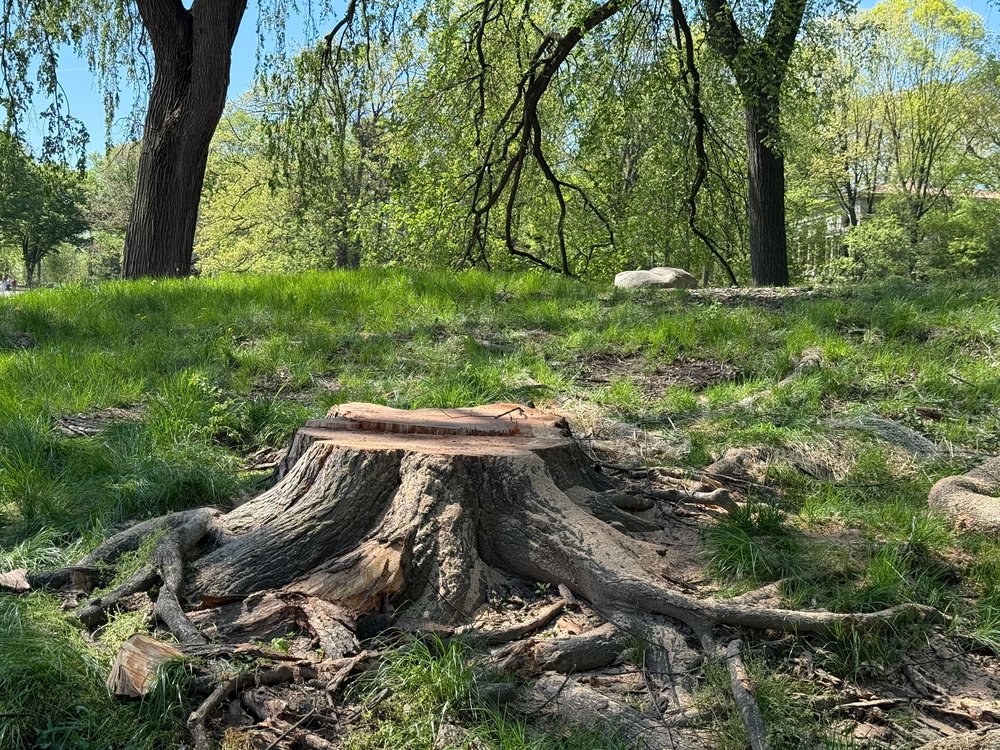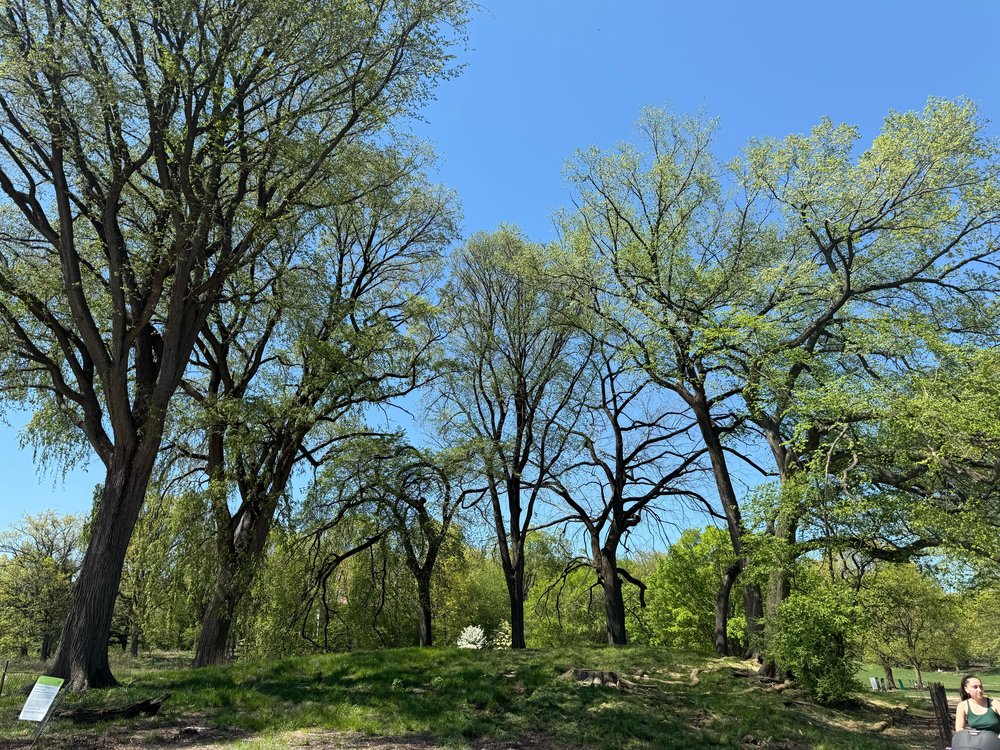These Prospect Park elm trees stood for about a century until disease struck
April 29, 2025, 11:26 a.m.
The Prospect Park Alliance is cutting down one-third of the trees in the Dog Beach Elm Grove because of Dutch elm disease.

Prospect Park Alliance arborist Malcolm Gore counted the rings on a tree stump at the top of a hill in Prospect Park.
"I got to 90,” he said.
Counting tree rings for age isn’t entirely accurate, Gore said. But he estimated the tree that stood there just hours earlier on Monday was around 100 years old.
It was originally one of nine massive American elms that made up the Dog Beach Elm Grove — a popular spot named after a nearby dog-swimming area. The tree died after being infected by Dutch elm disease, a fungus that can kill trees. High foot traffic and a drought last fall added to the elm's stress.
“Dog Beach is an off-leash area, so dogs have been able to run up here. People have picnicked here. Lots of folks have stopped today and said that this is like a magical place where they've had ceremonies and parties and things like that,” Gore said. “So it's really wonderful, but all that foot traffic adds up to compaction and erosion, which basically hurts the trees’ ability to take up nutrients and water from the ground.”
Two other trees in the grove have also died, and will have to be cut down, Gore said. He estimates they're about 75 to 100 years old as well. It’s a harsh reality after the Prospect Park Alliance worked for months to save the trees — doing everything from inoculating them against the fungus, watering them through the drought, creating a fenced perimeter and using fertilizer.
“It hurts,” he said. “I've put a lot of work into this grove and we lost [three] this spring. It's sad to see them go, but it's part of the job also — you kind of, you learn to learn to live with it."
American elms, with their tall and sprawling branches, were once among the most predominant trees in American streetscapes and public parks. But over the last century, Dutch elm disease has devastated their population, according to the Prospect Park Alliance. The fungus enters the soft tissue beneath the bark, blocking nutrients from circulating through the tree. In New York City, the Prospect Park Alliance and Central Park Conservancy have battled the disease for years — though officials it's more prevalent in Central Park, which has a bigger grouping of American elms planted closely together.
The Dog Beach Elm Grove is the largest grouping of the trees in Prospect Park, Gore said.
Typically, Prospect Park Alliance arborists try to catch Dutch elm disease early and prune infected wood before the disease reaches a tree’s roots. But, the Alliance says, some trees are beyond healing. When elms have to be taken down, they’re replaced with new plantings.

Gore said removing the three threes at the Dog Beach Elm Grove will also prevent dead limbs from potentially falling on anyone walking through it.
He spent Monday explaining the commotion to passersby like Bryan Wachtel, who was walking his dog, Hazel.
“So I know that this is the park's little collection right here, so it’s sad to be losing so many," Wachtel said.
Visual artist Shelley Krapes-Mackinnon said she’s been visiting the trees for years. On Monday she sat down on a nearby bench to sketch the remaining trees.
“It’s the limbs of the trees that are so compelling, the arms and the free-flowing lines,” she said. “It’s really a sight, it’s a composition and it's beautiful.”
Gore said the fence will remain in place for at least a year to help the soil recover and hopefully preserve the health of the six trees that will remain.
Meet NYC’s coolest new street trees — and see where they're going Want your own personal palm trees in NYC? He’s your guy. Damage from sprawling Prospect Park brush fire may take years to repair, officials say